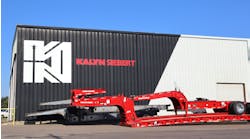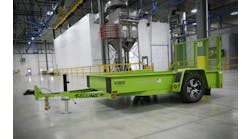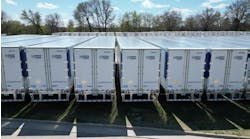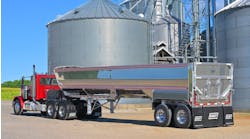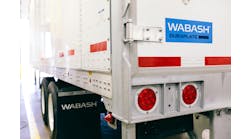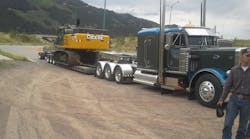Transporting bulky mining equipment, excavators, large loaders and heavy dozers – both for their own company and others –is a daily routine for Ewing Trucking & Construction and a part of the business that is booming. Until recently, the company did it all with a 55-ton lowboy and a 51-ton Talbert trailer—unless the company was trying to go through Colorado’s Eisenhower Tunnel.
The Eisenhower Tunnel, located on I-70 just 60 miles from Ewing Trucking & Construction, was a sore spot for drivers hauling oversized loads. The 13-foot, 11-inch passageway was far too restrictive to pass through with a trailer loaded with large equipment. And, unfortunately, it was a tedious route around. The alternative, old U.S. Highway 6 over Loveland Pass was curvier, longer and steeper. On top of it being more challenging driving, the route took an extra 30 minutes and required pilot cars for oversized loads.
After three decades of growth within the company’s Mobilization Division and escalating frustrations from the Eisenhower Tunnel, Bart Ewing, who now owns Ewing Trucking & Construction, decided investing in a third heavy-haul trailer was necessary. He set out to find a trailer that could provide enough clearance to get the largest equipment through the Eisenhower Tunnel, enough capacity to handle the weight of customers’ largest, heaviest equipment, and the length and width to accommodate the ever-expanding equipment.
Ewing visited Brian Conley, sales manager at Jim Hawk Truck Trailers in Denver, who sold a 51-ton Talbert lowboy12 years earlier to Ewing Trucking & Construction. Ewing and Conley specced a 55-ton drop sided trailer with a ratchet-style gooseneck and a nitrogen-assisted dampening system (Nitro) 4th axle booster. The setup would allow the company to run a 3+1 configuration and fully optimize the trailer’s capacity. Further, Conley said Talbert could manufacture the trailer at 9 feet wide, 54 feet long with a 27-foot working deck length and a 15-inch loaded deck height.
Ewing has been hauling with his drop side trailer since May 2013. He says he loves the unit’s Nitro stinger, which provides a proportionate weight distribution to the rear axle group.
In the case of Ewing’s trailer, the Nitro provides a 14-foot, 1-inch spacing behind axle 3 for the rear flip-up and removable axle. By hydraulically dampening axle movement and controlling load transfer, the Nitro absorbs hauling and loading shocks to reduce stress and provide a smoother ride. The suspension system oscillates around a central self-tracking pivot point grouping and hydraulically transfers loads in all terrains.
“The Nitro has really prevented several headaches when it comes to meeting axle/weight ratios and area bridge law specifications,” Ewing said. “All in all, the trailer has made a lot of things easier for us. We’re proud to know our trailers are with us for the long haul, not to mention relieved that we can now pass a 470 excavator through the tunnel with no hang-ups. That simply wasn’t possible before.”

